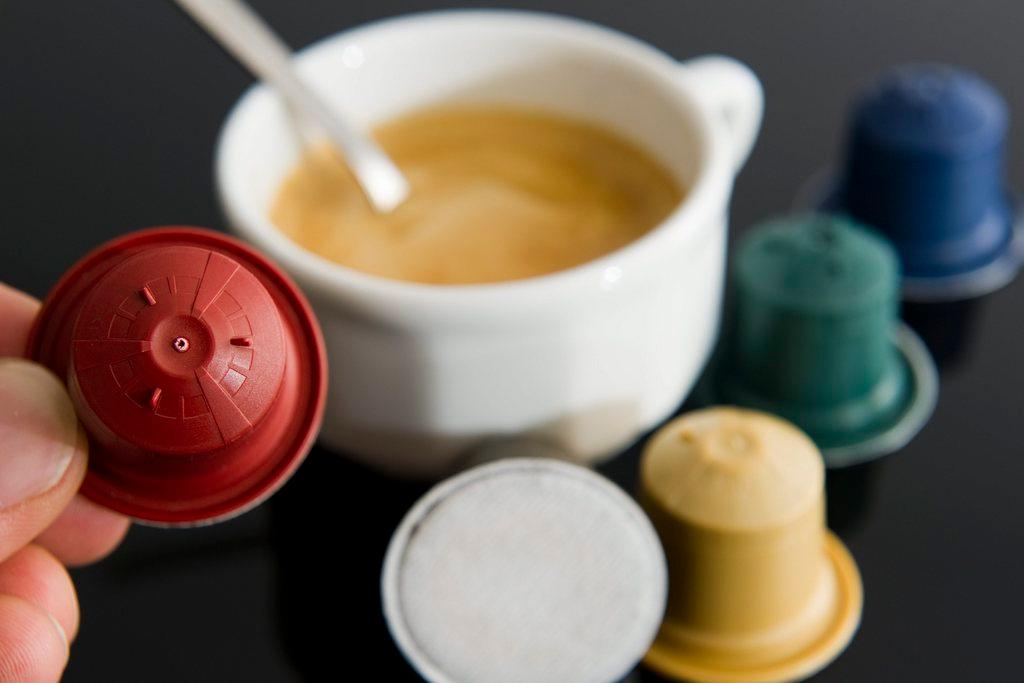Nespresso looks to raise the tempo on pod recycling
If Hollywood star George Clooney is the public face of Nespresso, then Jean-Marc Duvoisin is the behind-the-scenes chief executive of a brand that transformed a commodity into a luxury through the coffee pod revolution.

A soft-spoken Swiss, Mr Duvoisin has spent three decades at Nestlé – Nespresso’s parent and the world’s largest coffee company with 22 per cent of the market.
The 57-year old worked initially as a Nestlé salesman in Colombia before moving to Central America. After a succession of roles, he took the helm in 2013 at Nespresso, which generates SFr4.5bn ($4.7bn) in annual sales, according to analysts’ estimates.

More
Financial Times
External linkThis familiarity with the coffee-growing regions in Latin America, where he spent 18 years, has proved useful in his current role.
As a top-end producer – which uses double Oscar-winner Mr Clooney to give the brand an edge of modern urban sophistication – Nespresso is arguably under greater pressure than others when it comes to sourcing the arabica beans it needs for its coffee machines that use aluminium capsules.
Sitting at one end of a long table in Nespresso’s purpose-built headquarters – Nestlé’s base is a 20km drive away along Lake Geneva in Vevey – Mr Duvoisin outlines the challenges.
Of the coffee produced worldwide, only 1-2 per cent meets Nespresso’s standards.
Triple A programme
“The younger generations, the people who buy your products, they want to make sure that the company is doing good. The expectations of sustainability that customers have is, every day, more important,” he says.
Critics claim farmers receive only a very small part of the value chain – just 5 cents for each $3-$4 cup of coffee, according to leading economist Jeffrey Sachs. Mr Duvoisin says farmers participating in Nespresso’s sourcing programme, known as Triple A, are paid 30-40 per cent more than the market price for coffee.
“I go visit these farms more or less twice a year and see that these farmers have, I would say, a very decent livelihood,” he says. “They can send their kids to university.”
Nespresso set up its Triple A programme – which promotes quality, sustainability and productivity – in 2003 with the help of the Rainforest Alliance. Mr Duvoisin says Nespresso realised that “if we didn’t help farmers to produce more of the best-quality coffee we needed, we would be facing problems of supply.”
The brand overwhelmingly uses the arabica bean that, grown in upland and often mountainous areas, cannot be farmed intensively.
Climate change is exacerbating the supply problem as warmer weather drives farmers higher.
“Not philanthropic”
The plan works because it is in Nespresso’s interest to encourage more farmers to produce higher-quality coffee, he says.
“It’s not philanthropic,” he adds. “They have better coffee, so we need to pay more to make sure that we have access to this better quality.”
Once a farmer signs up, they are inspected by an agronomist responsible for providing expertise to improve yields and advise on methods for more sustainable production.
There are now 75,000 farmers signed up to the plan who are inspected by 350 agronomists.
The first years can be tough for the farmer. Mr Duvoisin says Nespresso typically rejects half the coffee produced but “little by little, after three, four years in the Triple A programme, you almost reject no coffee”. He adds: “So, in fact, they are able to sell more to Nespresso.”
About 80 per cent of Nespresso’s coffee is sourced from the programme, which operates in 12 countries.
Mr Duvoisin says some farmers in eastern Colombia, an area blighted by conflict, are rebuilding their lives by switching from growing coca leaves – used to make cocaine – to producing Triple A coffee.
“They needed to be able to access something which delivers a decent life to them. So this is when, quite quickly, they entered into the Triple A programme.”
Recycling issue
Closer to home, Nespresso faces charges that its capsules are wasting resources because the metal is not biodegradable.
Mr Duvoisin says aluminium is not the problem, arguing that it can be recycled infinitely. But he agrees that Nespresso needs to do more to encourage recycling of pods.
He says that even in Switzerland, where 46 per cent of Nespresso pods are recycled – a figure he describes as “pretty high” – more could be done.
He cites a campaign launched by the group based on forging the Victorinox Swiss army knife out of recycled Nespresso pods. Recycling rates improved, he says, by another 15 per cent. “It was so successful, linking two iconic Swiss brands, Nespresso with Victorinox,” he says, affirming that the group will try similar approaches in other countries.
Nespresso has tried alternatives to aluminium, Mr Duvoisin adds. None, however, protects the coffee so well from exposure to the air – thereby preserving its aromas – and none can withstand the pressure of the Nespresso machines as well. “What we should do is make sure that people do recycle,” he acknowledges. “This is our role.”
Copyright The Financial Times Limited 2017

In compliance with the JTI standards
More: SWI swissinfo.ch certified by the Journalism Trust Initiative











You can find an overview of ongoing debates with our journalists here . Please join us!
If you want to start a conversation about a topic raised in this article or want to report factual errors, email us at english@swissinfo.ch.